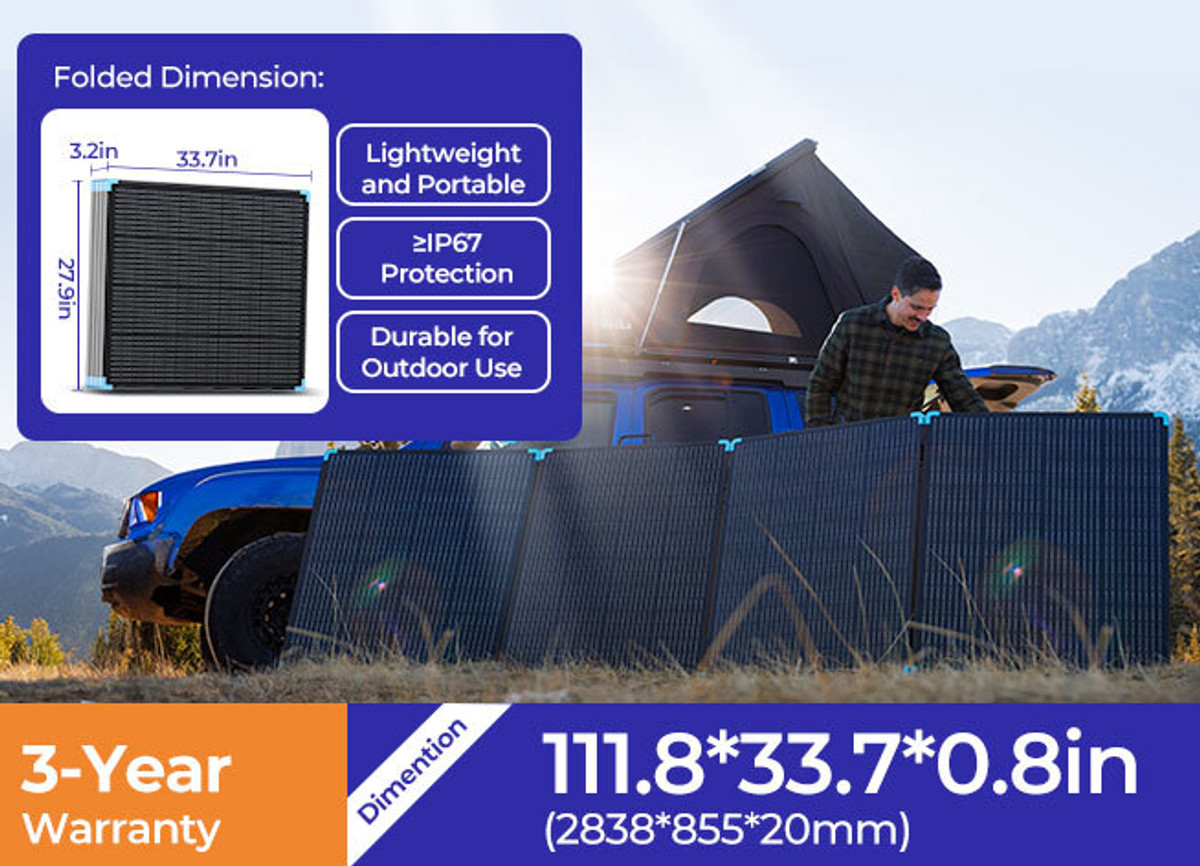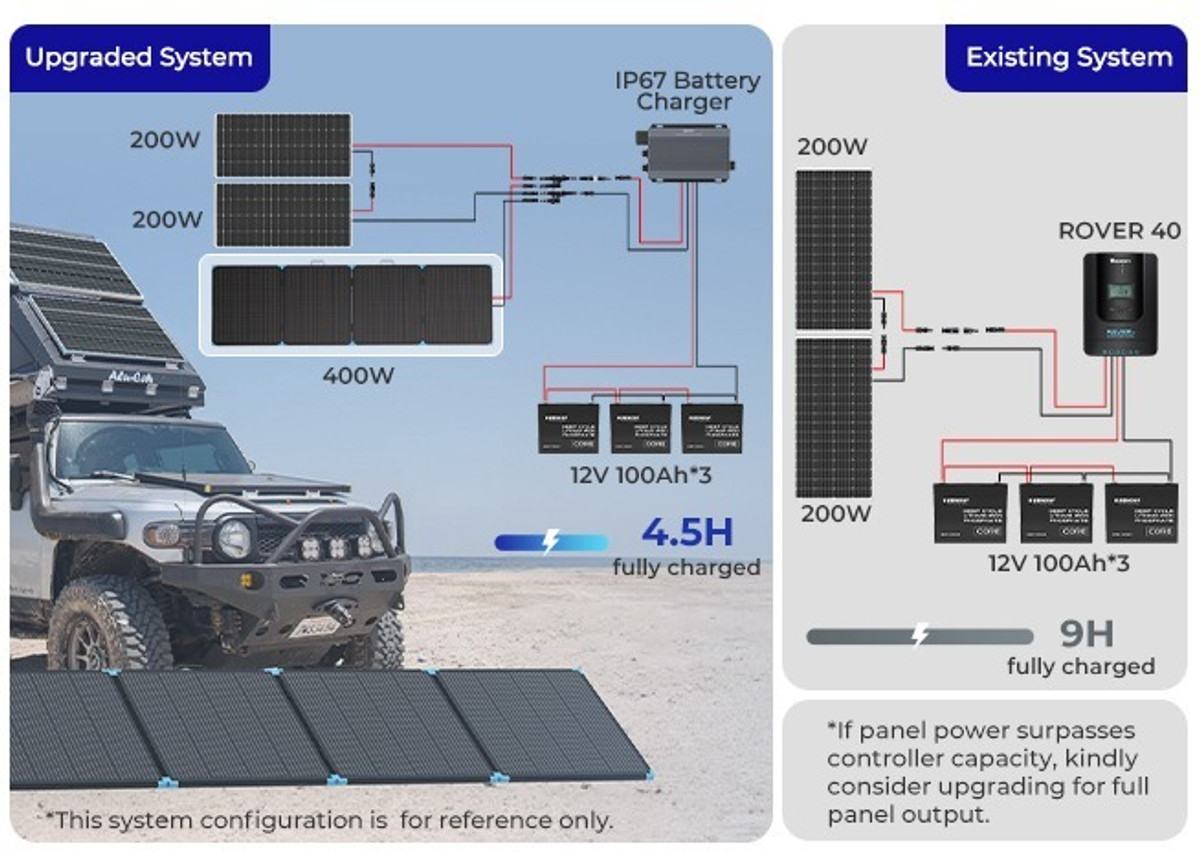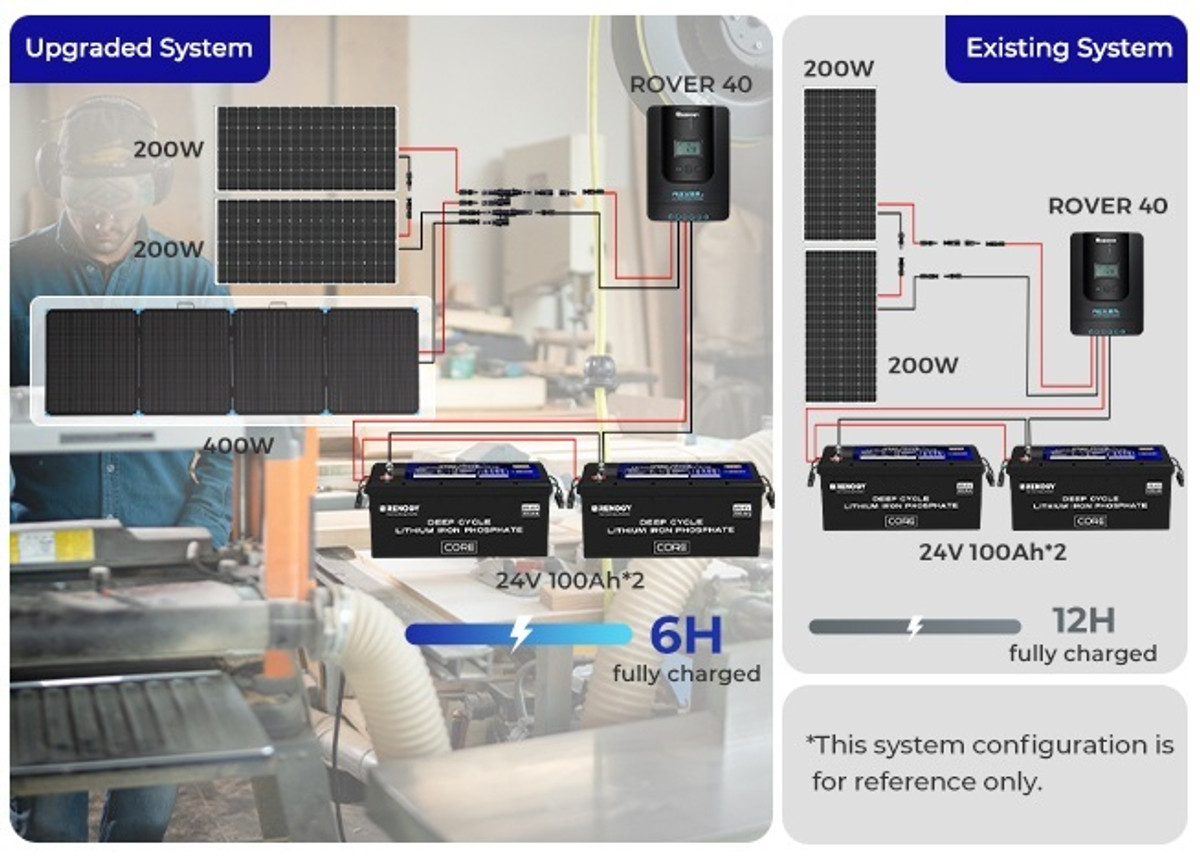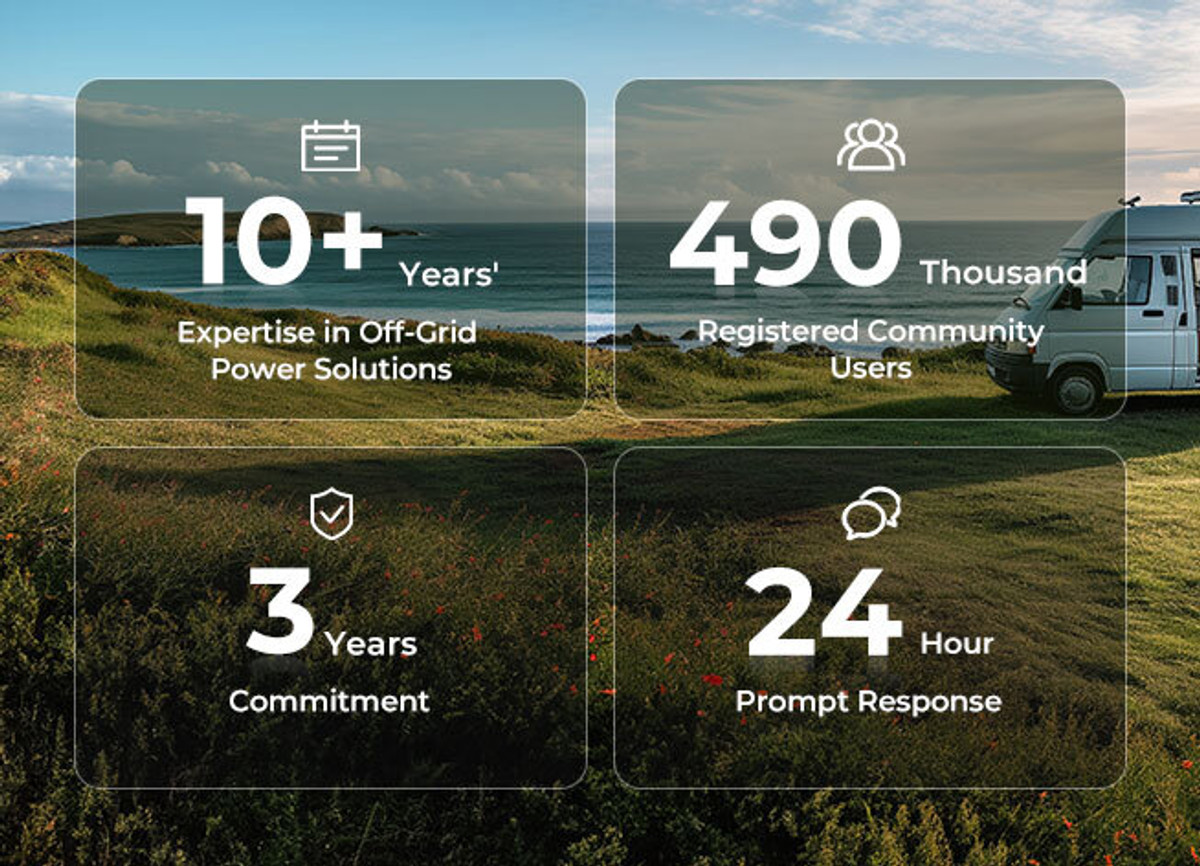
400W Lightweight Portable Solar Suitcase
This high-wattage solar suitcase is lightweight, portable, and supported by robust kickstands for durability.
Proactively Prepare for Outages
To ensure that your batteries are ready, a charge controller is required for proper setup.
Portable Power Anywhere
Please ensure that the DC input voltage for the portable power station exceeds 48V.
Robust Structure for Consistent Panel Output
Sturdy, rust-resistant kickstands are conducive to maximum power generation.
RV
Shed
The Dynamic Power Boost for Existing Solar Systems
Please ensure that the PV input voltage remains lower than the controller solar input voltage.
The Dynamic Power Boost for Existing Solar Systems
Please ensure that the PV input voltage remains lower than the controller solar input voltage.
Designed to be Impeccably Efficient
This portable solar suitcase offers 23% cell efficiency by maximizing module potential and harnessing compact solar cell layouts for enhanced module efficiency. Enjoy uniterrupted power for hours, even when travelling in your van or RV.
What People Are Saying About It
Unyielding Strength for Extended Outdoor Reliability
Built to last with premium materials for years of reliable performance.

Protective Case
Easily portable for transportation, offering impact protection.

Fiberglass Reinforcement
Delivers exceptional durability even in the face of light hailstorms.

Corner Protection
Ensures longevity and resilience against wear and tear.

ETFE Coating
Provides enhanced durability and weather resistance.
Uninterrupted Brilliance in Partial Shading
Parallel wiring ensures individual shadows won't diminish the overall efficiency of the interconnected panels.
Why Choose Renogy
Redefining excellence in solar solutions.
Package Includes
Renogy 400W Lightweight Portable Mono Solar Panel Suitcase
x 1

Renogy 400W Lightweight Portable Solar Suitcase
Model
RSP400LSC-UK
Maximum System Voltage
600 VDC UL
Max Power at STC
400W
Open Circuit Voltage
47.2V
Short Circuit Current
11.0A
Maximum Series Fuse Rating
15A
Operating Temperature
-40°F~185°F / -40℃~85℃
Operating Humidity
0% to 95% RH
Operating Altitude
Less than 5000m above sea level
Installation
Flush mount or place on a table
Dimensions
2838*855*20 mm (111.8x33.7 x0.8 in)
Weight
13.7kg (30.2 lbs)
Certification
CE, RoHS, TSCA
Warranty
5 years warranty
Performance Warranty
10-year 80% output warranty
Frequently Asked Questions
What do I need to complete my off-grid solar power system ?
To regulate current, a solar panel must be connected to a charge controller, while the electrical power can be stored by connecting it to a battery. To wire the solar panel(s) and charge controller, you will need adapter kit cables. Finally, tray cables are necessary to connect the charge controller to a deep-cycle battery.
What does off-grid and on-grid mean ?
Simply put, on-grid solar power equipment (like solar panels or arrays) is connected to the electrical grid. On the other hand, off-grid equipment entails systems that are not connected to the grid. Instead, they store the power that is generated for future use. The latter offers several benefits. First, it is portable and hence, can be utilized when travelling. Moreover, off-grid systems are not affected by grid blackouts.
Why is my solar panel under producing ?
Several factors may be impacting the performance of your solar panel. Typically, indirect sunlight, temperature rise, cloudy sky, and dirt and stain build up on the top glass lead to a reduced power output.
How should I connect solar panels in my electrical circuit (series vs parallel)
Depending on your electrical circuit size and power demand, solar panels can be connected in series or in parallel. When you connect them in series, the system current output will be the same as that of a singular panel, while producing the effect of adding up their operating voltage output. On the other hand, the operating current output of individual panels is added up to be the system output current when they are connected in parallel. In this case, the system output voltage will be the same as the output voltage of one solar panel. To meet the optimum power output and system rating for your power system, you can use both parallel and series connections.
How many solar panels do I need ?
To figure out how many solar panels you need, you must define the required power load. Power is measured in Watt, and capacity is commonly measured in Watt-hours (multiply power output in watts by the required number of hours of operation multiplied by a safety factor of 1.5-2). As such, first figure out your battery bank based on the minimum required capacity, and then decide how many panels or how much power input is needed.
What type of portable power station/solar generator is suited for the 400W Lightweight Portable Solar Suitcase?
While the 400 watt solar panel is compatible with most portable power stations, the DC input voltage must exceed 48V. For optimal performance, pair it with a power station that has a high input capacity and an efficient BMS.
How do I choose the right charge controller for my 400W Lightweight Portable Solar Suitcase?
Ensure the controller matches your battery voltage and that the PV input voltage is within the controller's capacity. Upgrade if panel power exceeds controller capacity. The controller should support at least 30A for the 400W portable solar panel.
How much output can a 400 watt solar panel provide for real-world use cases?
Solar panels typically deliver about 85% of the rated power. In clear midday conditions, the output may exceed this number while it may drop in less ideal lighting or cloudy weather. To maximize output, place the panel in a shadow-free area and avoid prolonged shading.
What type of portable power station/solar generator is suited for the 400W Lightweight Portable Solar Suitcase?
This 400 watt solar panel is compatible with most portable power stations. In fact, it is ideal for both camper solar panel setups and solar power systems for home use and. However, ensure that the DC input voltage exceeds 48V. For optimal performance, pair it with a power station that has a high input capacity and an efficient BMS.
How do I choose the right charge controller for my 400W Portable Solar Panel?
If the controller matches your battery voltage and that the PV input voltage is within the controller's capacity, you are good to go. In case panel power exceeds controller capacity, it is time to upgrade. For your 400W portable solar panel, the controller support at least 30A.

























































